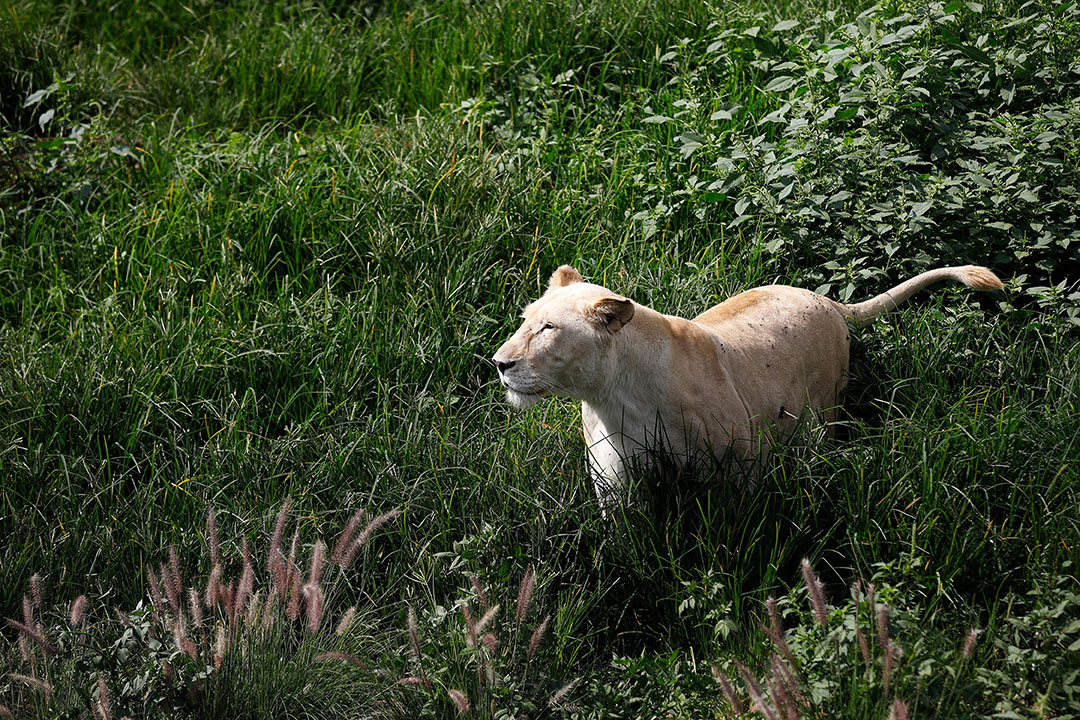COVID-19 Spread Among Animals Raises Concerns About New Mutations
ADF STAFF
An outbreak of COVID-19 among big cats at a South African zoo raises the prospect that the virus could remain active in animals even after being brought under control in humans, according to researchers at the University of Pretoria.
“The worry is really that, if it established there, that we may end up with new variants that we don’t know about. And it comes as a surprise,” Professor Marietjie Venter, an expert in animal respiratory viruses at the University of Pretoria, told National Public Radio.
In a paper published in January in the scientific journal MDPI, Venter and a team of researchers reported on the discovery of COVID-19 infections in three lions and a puma at a private zoo in Johannesburg.
Testing of the animals and their caretakers found that the cats and the chief keeper all shared the same strain of the delta variant of COVID-19. The researchers determined that the keeper had transmitted the virus to the cats while taking care of them.
Several other zoo staff members also had active or recent COVID-19 infections, but none showed symptoms, researchers said. Asymptomatic carriers have been a source for spreading the virus during the pandemic.
Since the beginning of the pandemic, the World Organisation for Animal Health has reported 645 cases of human-to-animal transmission of COVID-19 among 15 species of animals, a condition called reverse zoonosis. Zoonosis is the transmission of a disease from animals to humans.
Those cases have involved pets, such as dogs, cats and hamsters; farmed animals, such as minks; and captive animals, such as apes and the big cats in Johannesburg. In Europe, the virus turned up in two hippopotamuses in a Belgian zoo. In North America, COVID-19 has appeared in wild population of white-tailed deer.
“Reverse zoonosis is more of a risk to the animals at this stage, but infection in wild animals should be avoided since it is much harder to control,” Venter said in an email to ADF.
In laboratory experiments, a few animals, including pigs and birds, have proved to be immune to the virus.
South Africa is the only country in Africa to report reverse zoonosis cases. Venter said it’s unclear if any other African countries are tracking such transmission. Zoos in Spain, India and the United States have also reported human-to-lion COVID-19 transmission.
At the Johannesburg zoo, the big cats took seven weeks to clear the virus from their bodies. One lion developed pneumonia and was treated with dexamethasone, the same steroid used to treat humans with severed infections that are not life threatening. The other cats had mild symptoms.
The lions had exactly the same strain of the delta variant as their infected keeper, showing that the virus did not mutate after infecting the cats, researchers found.
The risk remains, however, that as COVID-19 moves from people to animals, it could come back with new mutations that are more resistant to treatments, according to Venter.
“Circulation of COVID-19 in wildlife such as the white-tailed deer is concerning, since these species could select for different variants to which the human population eventually would not have immunity,” Venter told ADF.
Infected animals also pose a risk to other animals in the same setting, creating more opportunities for transmission and mutation, researchers said. They recommend that people take the same precautions around animals as they should with people: Wear masks, wash hands and avoid close contact in enclosed spaces.
Human-to-animal transmission of COVID-19 raises several important issues, Venter and her team say. One is the question of how severely the virus affects different species — lions get sick, but deer show no effects, for example.
Another question is the degree to which animals can become long-term hosts for the virus, providing a continual source of infection even after the pandemic ends.
The biggest question is how animal biology and environmental conditions might give rise to new variants of the virus that then cycle back through humans. In that case, evolution could produce viral strains immune to the current array of treatments, returning the world to the early days of the pandemic.
“As the pandemic winds down, continual surveillance of wild animal populations will be vital to ensure that the pandemic doesn’t switch to another sphere of life,” Venter and her team wrote in The Conversation.


Comments are closed.